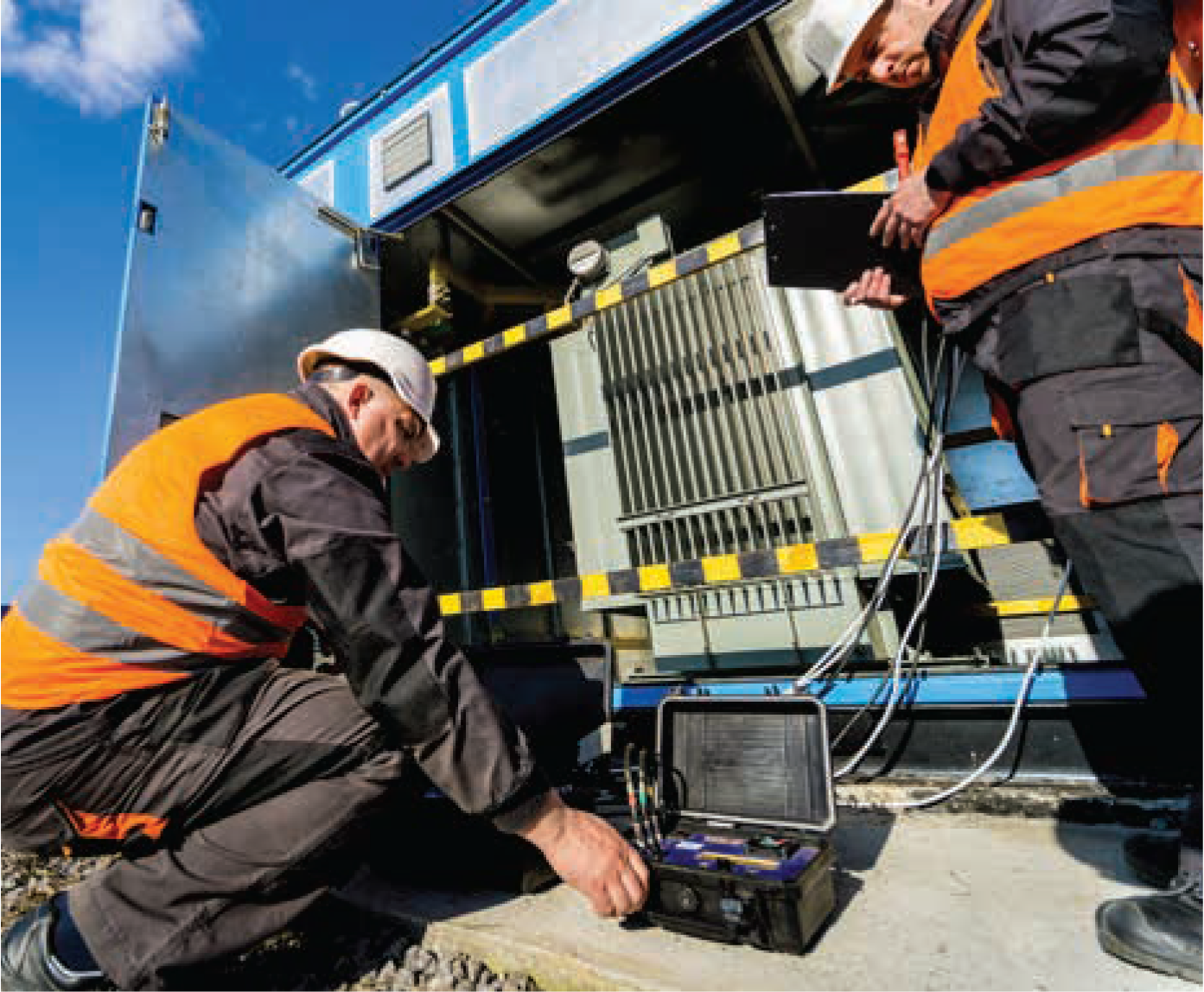Electrical Measurements in TAB

A discussion of about electrical measurements versus current technology.

I attended the NEBB Annual Meeting in Maui last month and it was a great way to celebrate our NEBB 50th Anniversary. A little windy but a great location, great hotel and excellent technical programs.
One of the technical programs on Friday was presented by the TAB Committee and the presentation highlighted the “new” 9th Edition of the TAB Procedural Standards. I say “new”, but it really isn’t. It was approved by the NEBB Board of Directors in July of 2019. This program would have been presented at our 2020 NEBB Annual Conference at the Greenbriar Resort in West Virginia in April of 2020. As you are aware, that meeting and the subsequent re-scheduled meetings in June and November of 2020 didn’t happen either.
Anyway, at the technical session, there was a good discussion regarding electrical measurements as required by the new TAB Procedural Standard. The discussion centered around taking incoming electrical measurements versus utilizing the values that may be displayed on the VFD screen. One of my old friends from Spokane, Washington made a comment about electrical measurements back in the day versus current technology. That got me thinking about the topic. Thanks Jerry Ensminger.
“...electrical measurements as required by the new TAB Procedural Standard.”
When I became a “Qualified Supervisor” (yes, that’s what we were called), taking and reporting electrical measurements was a requirement back then. Some of you may remember 1977 when we were still preparing TAB Reports on cave walls and using slide rules with analog instrumentation. Others may have no understanding of what I’m talking about.
The purpose of the electrical measurements back then was to prove to the design engineer that the applied electrical power to the equipment was the proper voltage and that the current draw did not exceed the rated limits. You know what – that’s still the purpose regardless of the current technology. Back then, we took electrical measurements on operating equipment with 480v/3Φ power without even knowing how to spell PPE. We will discuss this point later in this article.
While VFD’s were non-existent in 1977, they are almost everywhere today with the cost effectiveness of them. Use of VFD’s doesn’t impact the reason for the TAB firm to report these field measurements. As I stated before, reported measurements of the incoming power to a motor with or without a VFD, identifies to the design engineer, the building’s operating personnel and everyone else, that the motor is safe to run. Reporting the VFD’s output readings may be a nice feature, it actually has little or no value. The most important measurement that needs to be reported on the TAB Report is the frequency.
EXAMPLE #1
This brings us to my next point – reporting the “Corrected Full Load Amps” (CFLA). Let’s use an example of a motor that does not have a VFD and is specified to be 208v/3Φ. The nameplate data identifies that the voltage is 208/3Φ, the full load amps (FLA) are 10.8 amps, and the service factor (SF) is 1.15. On the day that the TAB Technician took the electrical measurements, they he/she reported the following data:
Voltages: 207v 208v 209v Current: 10.0 a 11.0 a 12.0 a
Since the average voltage is the same as the design voltage, there is no need to calculate the CFLA. And the motor is operating well below the SF amperage. The TAB report would show the 3 voltages and amperages as stated above and would state that the CFLA is 10.8 amps. Additionally, the voltage imbalance and amperage imbalance are well below the requirement ratings in the NEBB TAB Procedural Standard.
EXAMPLE #2
Example #2: Let’s do another example. Same motor as above but with different field measurements as follows:
| Voltages: | 217v | 218v | 219v |
| Current: | 11.0 a | 12.0 a | 13.0 a |
Since the actual applied voltage is not the same as the design, we must calculate the CFLA. The formula to calculate the CFLA is given by equation #1 below:
Where:
FLAactual = Corrected Full Load Amps
FLAtag = Nameplate Full Load Amps
Eactual = Actual Field Voltage
Etag = Nameplate Voltage
Now we can calculate the CFLA using equation #1 and our field data.
EQ #1 FLAactual = (FLAtag x Etag) / Eactual FLAactual = (10.8 a x 208v) / 218v = 10.3 amps
For Example #2, the average current is 12.0 amps. Since the CFLA is 10.3 amps and the SF is 1.15, the maximum safe operating current is: 10.3 x 1.15 = 11.8 amps. We are slightly exceeding the safe limits for this motor. This should be reported as a deficiency on the TAB Report if the condition could not be corrected in the field. So, the TAB Report should identify the 3 voltages and amperages as shown above the CFLA for this example would be reported as 10.3 amps.
EXAMPLE #3
Now, let’s make it a little more complex. We now have a VFD installed for this motor. All operating characteristics remain the same as the previous examples. The system has been balanced to within NEBB requirements and the final incoming electrical data is as shown below:
Voltages: 207v 208v 209v
Current: 6.5 a 7.0 a 7.5 a
Frequency: 42 Hz
“...the most important investment is the education and safety of the firm’s personnel.”
The display on the VFD will NOT be the same as the incoming power, either voltage or current. They will be whatever the VFD electronics calculate is needed to drive the motor at 42 Hz. The electrical measurement for this TAB Report should indicate the voltages, currents, frequency shown above and the CFLA would be reported as 10.8 amperes. The voltages and amperages on the load side of the VFD have no significance in determining if the motor is safe to operate. I think it’s an excellent practice to report these values, but they are meaningless when you understand the exact purpose of taking electrical measurements for TAB work. You must understand that the VFD will provide the power (both voltage and current) that is needed at the operating frequency. Even if the operating frequency is 60 Hz, the load side of the VFD may not replicate the exact same values as the incoming power characteristics. The incoming power is what needs to be reported in the TAB Report.
Another feature that is often overlooked are voltage imbalance and amperage imbalance. The NEBB TAB Procedural Standard going back to the 3rd Edition in 2005 has stated that a voltage imbalance exceeding 2% of the average voltage and or an amperage imbalance exceeding 10% of the average amperage is considered a deficiency and must be reported in the TAB Report. Additionally, voltage imbalance issues may be an indication of power issues within the facility and should be reported to the proper personnel. An amperage imbalance may be indicative of an internal fault within the motor.
Let’s close with a short discussion about taking TAB electrical measurements in the field today. While a firm’s instruments, vehicles, etc. may be their largest capital investment, the most important investment is the education and safety of the firm’s personnel. If your firm employs properly trained personal who use the correct protective gear, then I have no issue with your firm taking the required TAB electrical measurements. If your firm does NOT employ such a person, I would recommend that all TAB Electrical measurements be taken by properly trained persons with the proper protective gear using your firm’s calibrated electrical instrumentation.

Conclusion: Electrical measurements for TAB work should always be the values of the incoming power source to the installation. This is true regardless of whether there is a VFD serving a motor or not. A recommendation would be that the next edition of the TAB Procedural Standards provides a better-defined position on electrical measurements that would include the electrical measurements of the incoming power characteristics. Additionally, if the equipment is provided with a VFD, then the frequency and electrical characteristics of the load side the VFD would be required and must be reported in the TAB Report. Corrected Full Load Amps are required by NEBB and must be included in the TAB Report. Our NEBB Certified TAB Firms need to pay attention to voltage imbalance and amperage imbalance. Finally, we need to protect our employees by ensuring that all electrical measurements are taken by properly trained personnel with the correct protective gear.


